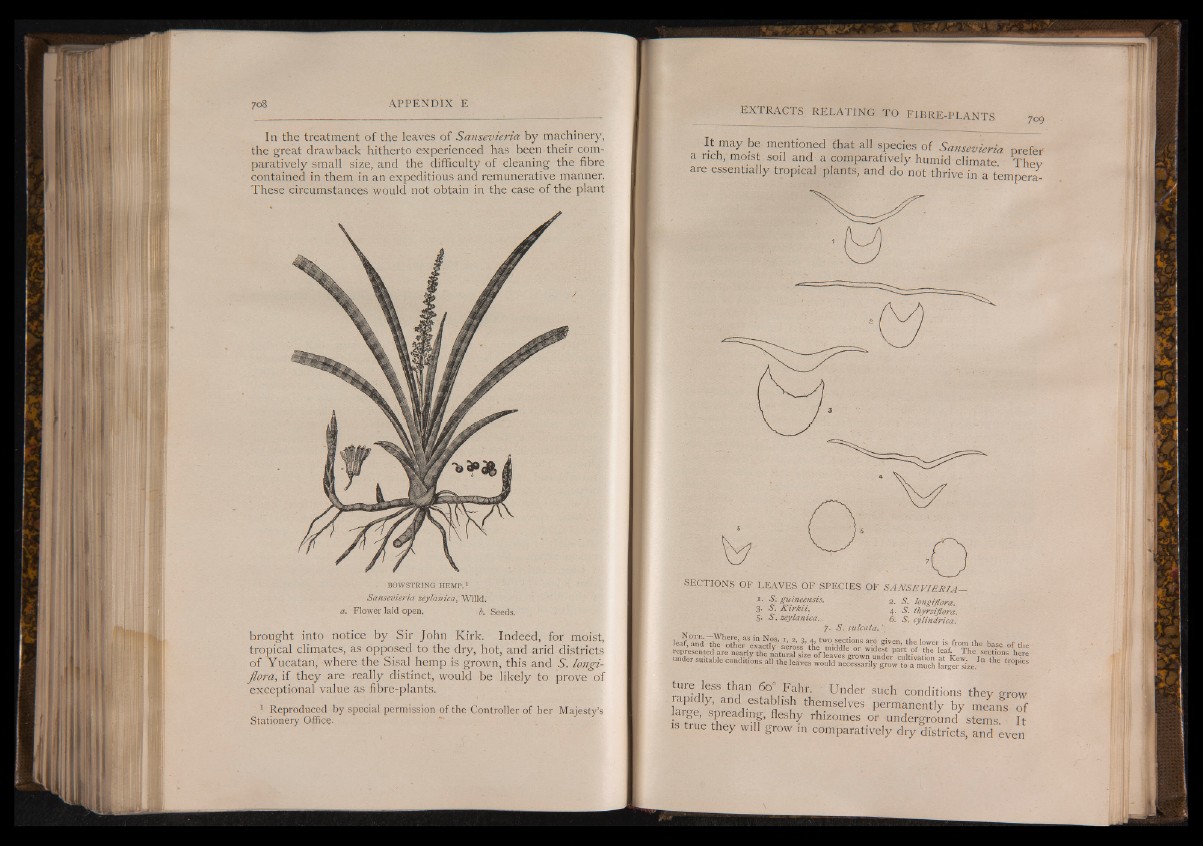
In the treatment of the leaves of Sansevieria by machinery,
the great drawback hitherto experienced has been their comparatively
small size, and the difficulty of cleaning the fibre
contained in them in an expeditious and remunerative manner.
These circumstances would not obtain in the case of the> plant
BOWSTRING HEMP.1
Sansevieria zeyl'anica; Willd.
a. Flower laid open. b. Seeds.
brought into notice by Sir John Kirk. Indeed, for moist,
tropical climates, as opposed to the dry, hot, and arid districts
of Yucatan, where the Sisal hemp is grown, this and S', longi-
flora, if they are really distinct, would be likely to prove .of
exceptional value as fibre-plants.
1 Reproduced by special permission of the Controller of her Majesty’s
Stationery Officee
x t r a c t s r e l a t i n g t o f i b r e -p l a n t s i| |
It may be mentioned that all species of Sansevieria prefer
a rich, moist soil and a comparatively humid climate Thev
are essentially tropical plants, and do not thrive in a tempera
SECTIONS OF LEAVES OF SPECIES OF SANSEVIERIA—
i . S. guineensis. 2 . S. longiflora
3- Ü Kirkii. 4 . 5 . thyrsiflora.
5 * *->. zeylanica.y. 6 ; S. cylihdrica.
7 . S. sulcata.
¡gf|and T o o th e r ''e x a S v ' airosl’ tte §?4 tljei lo" er, is from the b« e. of the
ture less than 60° Fahr. ■ Under such conditions they grow
apidly, and establish themselves permanently by means of
i s f f i e l l l ’ ^ rhizomes or underground stems. It
s true they will grow it? comparatively dry districts, and even